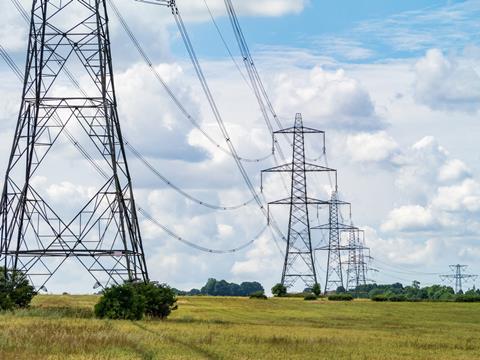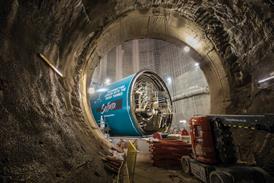Annual expenditure on expanding the distribution network needs to “at least double” to meet government targets, report says
The government will fail to meet future electricity demand without a “step change” in its approach to expanding energy distribution networks, the National Infrastructure Commission (NIC) has warned.
Annual capital expenditure in the network needs to “at least double” to support additional demand and energy generations between today and the government’s 2050 net zero target, the NIC said in a report published this morning.
“Urgent action” must also be taken to fill current and future skills gaps across the supply chain to speed up project delivery, including measures to attract, recruit and retain the large workforce needed to deliver the green transition, the report said.

Keir Starmer has promised to decarbonise 95% of the electricity grid by 2030, a programme which requires significant rerouting of distribution networks between newly built renewable energy sources, such as offshore wind, to population centres.
These changes come with a much greater expected demand for electricity, with demand projected to increase by around 50% by 2035 and double by 2050.
But the NIC said current regulation by Ofgem is too complex and does not encourage distribution network operators to make the “proactive” investments needed to boost network capacity.
The report said ‘load related expenditure’, investment needed to accommodate changes in electricity demand, would need to rise above £2bn a year from current levels of around £750m a year.
But it said delivery would be put under significant pressure by a shortage of craft skills, particularly cable jointers and overhead line workers, while warning of growing concerns that the need for general engineering skills will not be met due to strong competition within the wider energy sector.
“Given the time it takes to develop these skills, urgent action must be taken to ready the workforce for the energy transition and to meet net zero,” the report said.
While the NIC believes short and medium term solutions such as recruiting skilled workers from other countries could help, it said this would not be sufficient to manage the long term workforce challenge.
Failure to improve the process of expanding the networks will constrain economic growth and impact the government’s timetable for clean power delivery, the NIC said, with the report calling for a wider net zero skills strategy setting out how the workforce will be developed and maintained over time.
>>See also: The UK’s skills approach remains fractured – we need joined-up thinking
>>See also: A new quango, a new levy and 32 new hubs: Six months in, what has Labour done to fix the skills crisis?
The analysis found the required level of investment could add between £5 and £25 to the average annual household electricity bill by 2050, although bills were still expected to be lower than today if the government implements all of the NIC’s advice.
NIC chair John Armitt said the UK was “heading in the right direction” on decarbonising power but could not afford to be “complacent”.
“We must learn the lessons from playing catch-up on transmission grid expansion and get ahead of the curve on investing in our local networks, so people can enjoy the benefits of electric vehicles and heat pumps safe in the knowledge the network will back them up, and businesses can connect where and when they need to,” he said.
Armitt said this will require a new approach to regulation which encourages operators to make prudent local investments that anticipate future demand while asking consumers to make a small contribution up front.
“We should remember there’s a big prize on offer: harnessing the benefits of cheap renewable generation sooner rather than later and building a secure network optimised to support economic growth and decarbonisation, with resilience baked in,” he added.



























No comments yet